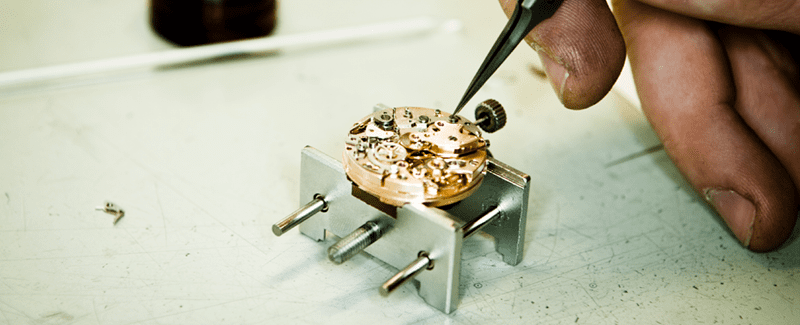
A new year is upon us, and a new decade. Economists say that this decade will be one of purposeful purchasing. Consumers will be buying what they want and love, but typically on the second-hand and pre-owned market, and only after doing a lot of online research. We know watches will be in the forefront of personal and gift purchases because a timepiece says so much about an individual. As such, let’s start the new year out right with a little easy-to-understand education about the different types of watch features and functions. Here we take a look at six important watch terms that everyone looking for a fine timepiece should know.
A tourbillon (pronounced tur-be-own) is an escapement added to a watch to compensate for the effects of gravity on the precision of the watch when it is in certain positions on the wrist. The tourbillon was invented by Abraham-Louis Breguet in 1795, but it wasn’t patented until 1801. Since then, there have been many evolutions of the tourbillon, to the point where today we have watches with multiple tourbillon escapements inside, with inclined and angled tourbillons and with multi-axis tourbillons – all in an effort to make the most precise timepiece. The tourbillon escapement naturally raises the price of the watch considerably, and, in today’s day and age – with high-tech silicon watch parts – some watch pundits would argue that we don’t even need the tourbillon any longer because our watches are so accurate.

A perpetual calendar watch is a highly coveted complication that displays the time (usually hours, minutes and seconds), as well as the day, date, month, leap years and phases of the moon. Typically packed with hundreds of tiny mechanical pieces, the perpetual calendar watch changes the automatically at the end of each month – taking into account the different month lengths. It also takes account of the leap years (which 2020 is). Most of today’s perpetual calendar watches will automatically adjust until the year 2100. Then, because we will skip that year’s leap year in order to adjust the Gregorian calendar to real-time, the watch will need a single adjustment by a watchmaker.

An annual calendar watch, like its perpetual calendar sibling, displays the time (hours, minutes and sometimes seconds) along with the day and date and month. An annual calendar can also show the phases of the moon. The difference between the annual and perpetual calendar, though, comes in the month feature. While perpetual calendars automatically adjust to the proper date at the end of each month no matter how long it is, the annual calendar will need to be adjusted manually once a year on the first of March. It can “remember” to adjust for months with 30 or 31 days, but it does not recognize the shorter month of February or the leap years.

Part of a group of watches known as acoustical timepieces, the minute repeater chimes the time via a series of hammers and gongs. The melodious tone is like music to the ears. Every hour on the hour, the watch sounds the hours, quarter hours passed since the hours, and minutes passed since the last quarter-hour. It does this using different tones thanks to the complex hammers and gongs inside the watch. Usually, the hours are sounded with a low tone, the quarter hours with two tones (the low and a high), and the minutes with a high-pitch sound. The wearer typically can also make the watch chime the time on demand. Many minute repeaters also have a “silence” mode so that the watch is not heard every hour. Some watch brands equip their minute repeaters with Westminster chimes so that the sound reflects the tones made by Big Ben in London. There are also a host of other acoustical watches that chime differently, such as decimal repeaters, five-minute repeaters, and grand and petite sonneries, among others.
Not to be confused with a chronometer, a chronograph is essentially a stopwatch used to time events. In its simplest form, the chronograph countdown function is used to time or measure continuous or dis-continual intervals of time. There are several types of chronographs, including a split-seconds (also known as a Rattrapante) chronograph that enables the timing of more than one event at the same time. A chronograph generally offers start, stop and reset to zero functions – operated by pressing a single pusher on the crown (known as a monopusher) or two pushers, one each on either side of the crown. Chronographs are known for their visual appeal, thanks to the small subsidiary dials on the main dial and the longer central seconds hand that most chronographs have.

A chronometer is a highly specific and precise rating that means that a watch movement has undergone rigorous testing under a variety of influencing factors such as motion, temperature, humidity, air pressure and more. Usually, a watch movement is tested by an outside observatory such as the Controle Officiel Suisse des Chronometres (COSC) — the most well-known facility. However, some brands do their own testing and have their own certifications. Chronometers were first invented for use in marine navigation to help sailors determine longitude.
©2011-2025 Worthy, Inc. All rights reserved.
Worthy, Inc. operates from 25 West 45th St., 2nd Floor, New York, NY 10036